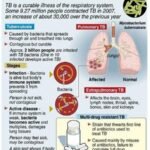WORLD DIABETES DAY 2023

The theme for World Diabetes Day 2023 is ‘Access to diabetes care‘ which will emphasize the importance of equal access to essential care and treatment for diabetes.
LEARNING FROM HOME/ WITHOUT CLASSES/ BASICS
Diabetes is a chronic disease that occurs when the pancreas is no longer able to make insulin, or when the body cannot make good use of the insulin it produces.
Insulin is a hormone made by the pancreas, that acts like a key to let glucose from the food we eat pass from the bloodstream into the cells in the body to produce energy. All carbohydrate foods are broken down into glucose in the blood. Insulin helps glucose get into the cells.
Not being able to produce insulin or use it effectively leads to raised glucose levels in the blood (known as hyperglycemia, diabetes mellitus). Over the long-term high glucose levels are associated with damage to the body and failure of various organs and tissues.
Type 1 diabetes used to be called juvenile-onset diabetes. It is usually caused by an auto-immune reaction where the body’s defense system attacks the cells that produce insulin. People with type 1 diabetes produce very little or no insulin. People with this form of diabetes need injections of insulin every day in order to control the levels of glucose in their blood. If people with type 1 diabetes do not have access to insulin, they will die.
Type 2 diabetes used to be called non-insulin-dependent diabetes or adult-onset diabetes, and accounts for at least 90% of all cases of diabetes. It is characterized by insulin resistance and relative insulin deficiency, either or both of which may be present at the time diabetes is diagnosed. It is often, but not always, associated with overweight or obesity, which itself can cause insulin resistance and lead to high blood glucose levels. People with type 2 diabetes can often initially manage their condition through exercise and diet. However, over time most people will require oral drugs and or insulin.
People with diabetes have an increased risk of developing a number of serious health problems. Consistently high blood glucose levels can lead to serious diseases affecting the heart and blood vessels, eyes, kidneys, nerves, and teeth.
Lowering risk
◼ Keep your blood sugar under 100 mg/dL and your glycerated blood glucose levels (HbA1c) below 5.7%.
◼ Keep your blood pressure below 130/90 mm/Hg, using medicine, if needed.
◼ Get cholesterol tested once a year.If high, take medicines to lower it.
◼ Walk fast, run, swim, or play(activities that make you breathe harder)for at least one hour a day seven days a week.
◼ Keep a healthy weight, with a waist size below 90 cm (35.4 inches) for men and 80 cm (31.5 inches) for women.
◼ Eat nutritious high-fiber food.
◼ Keep HbA1c(an indicator of blood glucose control over the past three months) reading below 5.7%, and between 5.4% and 5.6% for optimal control.
Diabetes insipidus is a rare condition where you produce a large amount of urine and often feel thirsty. Diabetes insipidus isn’t related to diabetes mellitus (usually just known as diabetes), but it does share some of the same signs and symptoms.
The two main symptoms of diabetes insipidus are:
extreme thirst (polydipsia)
passing large amounts of urine, even at night (polyuria)
Diabetes insipidus is caused by problems with a hormone called vasopressin (AVP), also called antidiuretic hormone (ADH).
AVP plays a key role in regulating the amount of fluid in the body. It’s produced by specialist nerve cells in a part of the brain known as the hypothalamus. AVP passes from the hypothalamus to the pituitary gland where it’s stored until needed.
The pituitary gland releases AVP when the amount of water in the body becomes too low. It helps retain water in the body by reducing the amount of water lost through the kidneys, making the kidneys produce more concentrated urine.
In diabetes insipidus, the lack of production of AVP means the kidney can’t make enough concentrated urine and too much water is passed from the body. In rare cases, the kidney doesn’t respond to AVP. This causes a specific form of diabetes insipidus, called nephrogenic diabetes insipidus.






2 Comments
PAWAN BASSI
November 14, 2023 at 12:50 pmBEAUTIFULLY ELABORATED AND EXPLAINED
rajeev
November 14, 2023 at 1:44 pmthanks for your response and encouragement